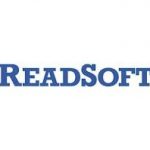How to Decide if Upgrading Your Enterprise Software Is Really Worth It
It’s time for more companies to question if software upgrades really deliver business value.
Small and mid-size manufacturers running Enterprise Resource Planning (ERP) systems are often too busy just trying to survive to focus on what’s involved with a system upgrade. To them, time gets translated into cash daily. Without the staff to evaluate and implement an upgrade successfully, a manufacturer can end up worse off than if they had never attempted one to begin with.
In working with aerospace and defense, discrete and high tech manufacturers, I’ve seen upgrades deliver much-needed new system features to support their expanding businesses. I’ve also seen upgrades go very badly, literally taking a thriving business and bring it to a screeching halt. There are many examples of upgrades turning into shelfware too.
The following are key take-aways I’ve learned from working with CIOs, their staffs at these companies regarding their upgrade results:
- The more experienced a team is with upgrades, the lower the vendor trust. Burned too many times by the gulf between expectations and experiences, the most experienced teams quit believing the promises of vendors and wait to see what the upgrade really does. Conversely, the manufacturers who have the most trust in vendors tend to upgrade less often. Often high trust relationships are known for their openness including upgrade roadmaps being shown months in advance, and more focused explanations of what is – and isn’t – in the upgrade for each customer.
- Be brutally honest in your self-assessment of how adept your company is at change management or not – and this includes your CEO. Upgrades tend to amplify a company’s change management strengths and weaknesses. You’ll hear consultants and vendor sales people tell you to write a change management plan – as if a stack of papers is going to change your culture. What you need is someone who is “all-in” and completely committed – ideally at the C-level, leading the upgrade. Passion and commitment from a leader goes much farther than any written plan. Unless your company can find the passion to change, either internally or driven by a strong leader, pass on the upgrade.
- The team you put together will make or break your upgrade, so choose wisely. A very important factor to consider in upgrading your ERP and enterprise software is the availability of the most talented people your company have in the following areas: project management, business process management, accounting, finance, administration, pricing, IT systems architecture, manufacturing and supply chain. The experts companies need on this team are often already double-booked most hours of the day and aren’t available. Getting their time will mean the difference been an upgrade delivering value or not.
- A well-understood business case for the upgrade that plainly states the competitive advantage galvanizes teams faster than any directive from senior management. It’s interesting to watch upgrades where teams see the immediate competitive value versus those that don’t. Competitive value galvanizes a diverse team together and energizes them to get results and gives them a strong sense of ownership too.
- Upgrading a highly customized system often costs 10X in services to every dollar spent on the software upgrade itself. This is known as the Money Pit of enterprise software, because companies end up shoveling dollars and time into upgrading customized systems.
- Audit and evaluate the upgrade tools from your enterprise software vendor very early in the process. Included in this step needs to be a thorough review of the documentation, training, upgrade tool usability and discussions with references in your industry who have successfully completed the upgrade.
Bottom line: Critically evaluating if a software upgrade is really necessary needs to happen more often with enterprises today who are often promised more than they end up getting.
Source: Louis Columbus










